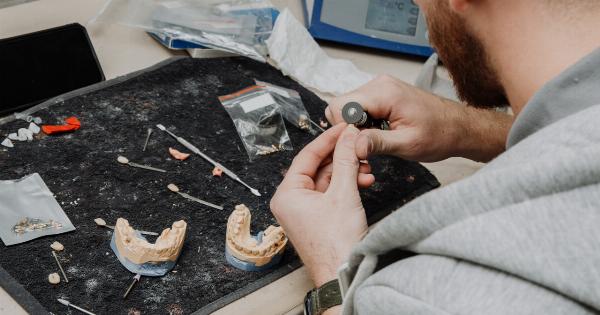Ovarian Cancer is one of the deadliest cancers among women. According to the American Cancer Society, it ranks fifth in cancer deaths among women in the US alone.
Surgery is the most effective way to treat ovarian cancer, but it is an incredibly complex procedure that requires a great deal of precision and dexterity. Recently, however, advancements in robotic technology have made it easier for doctors to perform ovarian cancer surgeries with greater accuracy. This has revolutionized the way surgeries are performed and improved patient outcomes significantly.
What is Ovarian Cancer?
Ovarian cancer develops when cells in the ovary start to grow uncontrollably, forming a tumor. These tumors can be benign (noncancerous) or malignant (cancerous).
Unfortunately, the symptoms of ovarian cancer are not typically present in its early stages, so the cancer is often not detected until it has progressed to a more advanced stage. This is why ovarian cancer is so deadly. However, early detection can improve survival rates.
Traditional Ovarian Cancer Surgery
The traditional approach to ovarian cancer surgery is called a laparotomy. In this procedure, a large incision is made in the abdomen to gain access to the ovaries, fallopian tubes, uterus, and other organs in the pelvic region.
During surgery, the surgeon looks directly into the abdominal cavity and uses their hands and instruments to perform the procedure. Although this method has been used for many years, it is a highly invasive procedure that carries a significant risk of complications, including infection, bleeding, and blood clots.
Recovery time can be long and painful, with the patient needing to stay in the hospital for up to a week after surgery.
Robotic Ovarian Cancer Surgery
Robotic surgery is a minimally invasive surgical technique that uses robotic arms to perform the procedure. In this procedure, the surgeon sits at a console and manipulates surgical instruments attached to robotic arms.
The instruments are inserted into the patient’s body through small incisions, and a high-definition 3D camera provides the surgeon with a clear, magnified view of the surgical site. Using this technology, the surgeon can perform surgery with greater precision and accuracy than ever before. The chance of complications associated with the surgery is significantly reduced, and the recovery time is much shorter.
Robotic Surgery Benefits for Ovarian Cancer Treatment
Robotic surgery has several benefits over traditional surgery when it comes to ovarian cancer treatment:.
- Minimally Invasive: Robotic surgery requires only small incisions, reducing the risk of infection and bleeding.
- Less Pain: Patients who undergo robotic surgery experience much less pain than those who have traditional surgery.
- Faster Recovery: Since robotic surgery is less invasive, patients can recover much more quickly and experience a shorter hospital stay.
- Precise: The robotic instruments used in surgery are much more precise and provide greater accuracy than traditional instruments used in surgery.
- Less Blood Loss: With robotic surgery, there is less blood loss during surgery than in traditional surgery.
How Robotic Surgery Works
Robotic surgery uses a combination of robotic arms, surgical instruments, and a high-definition 3D camera. The surgical instruments are attached to robotic arms, which are inserted into the patient’s body through small incisions.
The surgeon sits at a console with a 3D view of the surgical site and uses master controls to operate the instruments. The robotic arms translate the surgeon’s movements into precise, real-time movements of the instruments inside the patient’s body.
The 3D camera provides the surgeon with a clear, magnified view of the surgical site, allowing him or her to perform the procedure with greater accuracy and precision.
Robotic Surgery for Ovarian Cancer Treatment: Procedure
The steps involved in robotic surgery for ovarian cancer treatment include:.
Step 1: Anesthesia
General anesthesia is administered to the patient to ensure they are not awake during the surgical procedure.
Step 2: Incisions
After the patient is anesthetized, the surgeon makes several small incisions in the abdomen. These incisions are typically less than an inch long and are used to insert the robotic arms and camera into the patient’s body.
Step 3: Insertion of Robotic Arms and Camera
The robotic arms and camera are inserted into the patient’s body through the small incisions. The camera provides the surgeon with a high-definition, magnified view of the surgical site.
The surgeon then operates the robotic arms using a master console.
Step 4: Surgery
The surgeon uses the robotic instruments to perform the necessary procedure on the ovaries, fallopian tubes, uterus, and other organs in the pelvic region.
The magnified view provided by the camera gives the surgeon a clear, precise view of the surgical site, allowing for greater precision and accuracy.
Step 5: Closing the Incisions
Once the surgery is complete, the robotic arms and camera are removed, and the small incisions are closed using surgical sterilized glue or stitches.
Patient Considerations for Robotic Surgery
Robotic surgery for the treatment of ovarian cancer has numerous advantages for patients. However, there are some things that patients should consider before undergoing this type of surgery.
Surgeon Skill and Experience
Robotic surgery is performed by highly trained and skilled surgeons. It is important to choose a surgeon who is experienced in performing robotic surgery.
During your initial consultation, be sure to ask your surgeon about their experience with robotic surgery.
Cost
Robotic surgery may be more expensive than traditional surgery. During your initial consultation, ask the surgeon about the cost of the procedure and if it is covered by your insurance policy.
It is also important to consider the cost of follow-up care and recovery when evaluating the overall cost of the procedure.
Recovery Time
Robotic surgery often has a shorter recovery time than traditional surgery. However, it is still important to discuss the expected recovery time with your surgeon during the consultation.
Additionally, you should be prepared to follow all post-operative instructions carefully to maximize your chances of a speedy recovery.
Conclusion
Robotic surgery has revolutionized the way that ovarian cancer surgeries are performed. Thanks to this technology, patients can now undergo less-invasive procedures that result in reduced pain and a faster recovery time.
Robotic surgery has also led to improved patient outcomes by providing surgeons with greater accuracy and precision during the procedure. If you are considering robotic surgery for the treatment of ovarian cancer, it is important to discuss the procedure and its potential benefits and risks with a qualified surgeon.





























